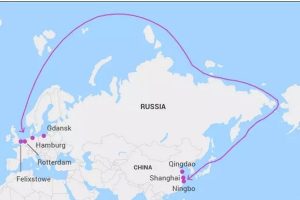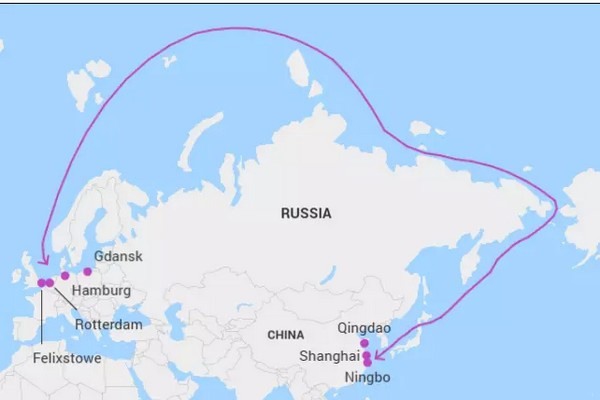
10/02/2025
The China-Europe Arctic Express is now operational, cutting transit time from Ningbo to Felixstowe to just 18 days via the Northern Sea Route, reducing emissions and boosting the Polar Silk Road.
NINGBO-ZHOUSHAN – September 25, 2025 – In a landmark move for global shipping, China has officially launched the world’s first regular container service via the Arctic Ocean. The historic departure of the Istanbul Bridge vessel from Ningbo-Zhoushan port on September 22 marks the beginning of the China-Europe Arctic Express, a direct route to the UK port of Felixstowe.
This new Arctic container route promises to revolutionise trade between Asia and Europe by significantly reducing transit times and carbon emissions, positioning itself as a key artery of the “Polar Silk Road” under China’s expansive Belt and Road Initiative (BRI).
Faster Transit, Lower Emissions
The primary advantage of the new Arctic Express service is its dramatic reduction in voyage duration. The Liberian-flagged Istanbul Bridge, operated by Neom Holding, is expected to complete its journey to Felixstowe in just 18 days.
This is approximately:
-
8 days faster than the previous record for an Arctic transit to Germany.
-
A staggering 22 days quicker than the traditional route through the Suez Canal.
Alongside time savings, the environmental impact is equally significant. By taking a shorter path, the new Arctic container route is projected to cut CO₂ emissions by nearly 50% compared to conventional pathways, a key selling point for shippers of high-value and cross-border e-commerce goods, for whom the service is specifically designed.

A Controversial Yet Strategic Corridor
Despite the clear logistical benefits, the expansion of shipping along the Northern Sea Route (NSR) is not without controversy. Environmental groups have consistently highlighted the risks to the fragile Arctic ecosystem, including the potential for oil spills and the effects of black carbon from ship emissions. The lack of comprehensive emergency support and salvage infrastructure in such a remote and harsh environment adds another layer of risk.
However, the commercial and strategic momentum is building. According to the Center for High North Logistics, 52 transits were recorded along the NSR in the first half of the 2025 summer-autumn shipping season, indicating growing interest.
The Zhejiang Port Group, in a official statement, framed the launch as “a concrete application of international Arctic cooperation integrated into the global logistics system,” underscoring its role in the broader Belt and Road Initiative framework.
The success of the China-Europe Arctic Express will be closely watched by the entire global shipping industry, as it represents a tangible shift in trade routes and a new chapter in Arctic development.
###
Keywords/Tags: Arctic Container Route, Polar Silk Road, China-Europe Shipping, Northern Sea Route, Ningbo-Zhoushan Port, Belt and Road Initiative, Sustainable Shipping, Arctic Express, Felixstowe, Global Logistics, Supply Chain Innovation.

